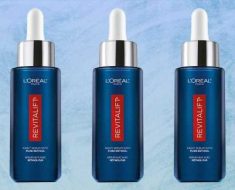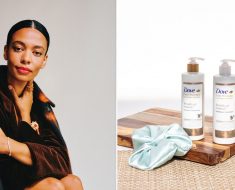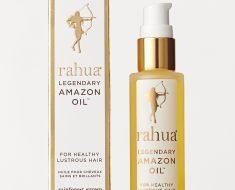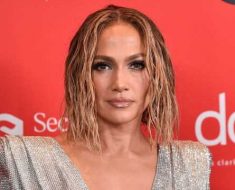This story is a part of The Truth About Hair Loss, an exploration into why we lose our hair, the emotional and monetary costs that come along with the experience, and what the future of treatment (and acceptance) could look like.
There's an Instagram photo from about a decade ago I think about often. I'm smiling, posing next to a friend, our hair both long, thick, shiny, and beautiful. A few years after that, I was laid off from my job and began noticing that my hair felt thinner, with more strands falling out in the shower than before. I figured it was due to the stress of being unemployed coupled with getting older, but that my hair would eventually recover. Cut to now, and it never really did. Every time I see that photo, I feel a little sad.
I'm far from alone in this experience: Every year, millions of women experience hair loss, whether it's due to a genetic condition, hormonal changes, disease, a nutritional deficiency, issues such as traction alopecia, or stress from lifestyle changes or the pandemic. More and more people are speaking up about it, such as Rep. Ayanna Pressley of Massachusetts who revealed she has alopecia areata, Ashley Graham who suffered from postpartum hair loss, and Ricki Lake who had been secretly dealing with hair loss for years. But it can still be devastating, not to mention a costly thing to treat. Furthermore, with so many treatment options that have a wide range of costs and reported effectiveness, it can be hard to figure out just where to start.
All products featured on Allure are independently selected by our editors. However, when you buy something through our retail links, we may earn an affiliate commission.
Wigs and Extensions
One of the least invasive ways to deal with hair loss is by wearing a wig, which can be pretty pricey if the piece is high quality. Still, compared to some other types of hair loss treatments, they are generally relatively affordable and don't come with many potential risks or serious side effects. According to hairstylist Guy Tang, the two most popular types of wigs are polyurethane base and mesh base. "Polyurethane base is pigmented and helps match your skin tone, while mesh base is made up of full lace," explains Tang. "Mesh wigs are the most versatile option because they can be styled many different ways due to the hairline being almost undetectable." There are also human hair versus synthetic options to consider. "Human hair gives a much more natural look and feel along with being able to style it any way you want," says Tang. (Synthetic hair wigs have limitations in terms of styling with hot tools unless they are made with heat-resistant fibers.)
While a decent quality wig can range from $100-$400, choosing one should depend on how often you plan to wear it. "If you intend to wear the wig every day, then you would want to invest more to make sure you have very high-quality hair that will last through everyday wear – these types of wigs range in price from $700 to $2000," he says. There is also the option of toppers, half-wigs, and falls for those who don't necessarily need a full wig. Depending on whether a topper or extension is made from human or synthetic hair, and the thickness and length, the price can vary widely. For example, you can get a topper made with 100 percent Remy human hair from Hidden Crown for $499, a synthetic ponytail from Insert Name Here for around $50, or a Halo extension from Luxy Hair for around $250-$290 for a 20" extension.
Beauty and Grooming Products
A proper grooming routine is one of the best things you can do to help treat hair loss, but especially when you focus on your scalp. "Scalp health is absolutely critical to hair health and hair loss," explains Michelle Henry, a dermatologist in Manhattan. "The scalp houses the follicle, and without promoting an environment for healthy cellular turnover, hair growth and quality will be stunted. So, as a dermatologist, I cannot think of healthy hair without considering the health of the scalp." Vickie Vidov, a hairstylist who specializes in scalp health, also says that keeping the follicle nourished is key in order to prevent any further hair loss. "Depending on if your hair loss is due to hormones or reactional (stress, post-pregnancy, diet or fatigue), we need to treat the follicle and stimulate growth over time," says Vidov.
When it comes to whether regular scalp massages have hair growth benefits, the doctors we spoke to shared mixed opinions on its efficacy. Hadley King, a dermatologist based in New York City, says that some research has shown hair growth benefits from scalp massage, and recommends massaging when applying topicals, but Henry doesn't think the studies are robust enough. Still, taking the time to massage your scalp with something like a scrub is a great way to keep it clean and healthy, as dirt, oil, and hair care products can build up around the hair follicles. Scalp scrubs range in price, with the $13.99 TPH by TARAJI Never Salty scrub on the low end and the $75 Philip B Peppermint Avocado Scalp Scrub on the high. If shaving your head is part of your grooming routine, you'll need a good set of clippers, which can cost $32.99 for a budget Wahl Color Pro Plus clipper kit to about $199.99 for a BaBylissPro ROSEFX clipper. And if you're looking for something to fill in sparse spots, you can use a root touch-up spray or concealer, like L'Oreal Paris Magic Root Cover Up ($10.99), Caboki Hair Loss Concealer ($50 for 30 gram), or Oribe Airbrush Root Touch-Up Spray ($34).
Minoxidil
When it comes to topical treatments, Kingsays minoxidil is the most proven over-the-counter option, and works for all genders, unlike other treatments that are currently only FDA-approved for men. "It is a potassium channel opener, causing hyperpolarization of cell membranes. Theoretically, by widening blood vessels and opening potassium channels, it allows more oxygen, blood, and nutrients to reach the follicles," she explains. There are many over-the-counter products featuring minoxidil as the star — like Rogaine, which can be purchased from Target for about $47 for a four-month supply. Other newer brands that contain minoxidil and cater to women are Hers, which costs $45 for a three month-long supply, as well as BosleyMD and Nioxin which cost $35 for two months and one month respectively. Henry also uses "a lot of minoxidil" for hair loss patients, but will sometimes compound minoxidil with ingredients like finasteride or spironolactone topically.
PRP Injections
Arash Akhavan, a dermatologist based in New York City, says that the most popular hair loss treatment he performs is Platelet-Rich Plasma injections, aka PRP. During the procedure, blood is drawn into special collection tubes and spun in a centrifuge separating the blood into its various components. "One of these components that has a high concentration of platelets (PRP) also has a high concentration of growth factors and potentially stem cells," explains Akhavan. "Injection of this layer into the scalp can stimulate hair growth." PRP is typically done as a series of four treatments monthly with maintenance every four months thereafter, with each session costing approximately $700 to $1000. Of course, you’ll also need to see a dermatologist for diagnosis and consultation, which can cost $20 to $50 with an insurance copay, and an average of $221 without insurance.
Hair Transplants
Craig Ziering, a hair transplant surgeon in Beverly Hills, says that women usually lose their hair genetically in a different pattern than men, at the mid part of the head moving outward instead of front to back, though both can occur. Other conditions, he adds, can create bald patches or areas and each can have different treatment options. "Hairline restoration or modification is common for women to offer fullness, shape, and a more balanced face or youthful appearance. This requires a surgical option," says Ziering. Even though their hair pattern is significantly different from that of men, women can make for very good transplant candidates, he says.
One option is Follicular Unit Excision and Extraction, known as FUE transplant. "This involves a surgical hair harvesting method used to obtain donor hair one graft at a time," he explains. But because of the process for FUE, he says that most women patients will opt for a Microscopically Dissected Elliptical Excision, or MDEE (formerly referred to as a Follicular Unit Transplant), procedure. "In its literal meaning, MDEE refers to Strip Harvest Surgery — or the process by which a strip of tissue is removed from the donor zone, placed under a microscope, and the follicular units are then separated into their naturally occurring groupings," says Ziering. "With the alternative FUE surgery, you have to shave down the back and sides of the head in the donor zone. Most women don't want to do that, so the FUT, or now called the MDEE, option is preferable."
Because there can be a wide range for the number of grafts or treatments needed for restoration, the cost can vary. But due to it being a surgical procedure, which means it requires several medical staff and may require several sessions, Ziering says transplants average about "$5,000 to $10,000, and for full restoration, well over $10,000." While it's the most expensive treatment, the good thing is, once patients get a transplant, they're pretty much good to go. "There is a high emotional cost to hair loss for women," says Ziering. "More women are actually opting for the transplantation procedures because it is a permanent, natural procedure that gives them back the self-esteem that is priceless."
Supplements
Hair growth supplements, while not regulated by the FDA, usually contain nutrients that may encourage hair growth such as biotin, folic acid, zinc, and vitamins A, D, C, E, among others. Aside from wigs, supplements are also probably the most accessible and readily available treatment for hair loss, as they don’t need to be prescribed by a doctor and can be purchased anywhere from your local grocery store to Target and Amazon. Akvan says that supplements are a popular complement to more proven effective hair growth treatments such as minoxidil, hormonal therapy, and PRP. "The two most popular supplements used by our patients are Nutrafol and Viviscal. They both contain ingredients that provide support for blood flow and nutrition for the growth of hair and fight environmental stressors," he says. Both Nutrafol and Viviscal are available on Amazon, and cost around $88 and $30 for a month’s supply, respectively. Other hair loss supplements, such as ones containing biotin, can range from around $16.29 for a four-month supply by Nature's Bounty to $84 for a three-month supply by Vegamour, though proof of their effectiveness is extremely limited.
A note about topical oils
Botanical oils, such as castor, rosemary, pumpkin seed, and coconut oil, may be age-old remedies for hair loss, but more research is needed to back up the claims. "A 2015 study compared rosemary oil to minoxidil for hair growth and at six months, both groups saw significant increases in hair growth. This effect could be due to rosemary oil's enhancement of microcapillary perfusion," says King. One study showed that pumpkin seed oil increased hair growth in men with androgenetic alopecia, possibly, the authors suggest, due to blocking 5-alpha reductase, an enzyme that converts testosterone to DHT. But "we need more data," says King. Castor oil has been shown in a study to increase hair luster, but there are no studies that show that castor oil directly causes hair growth. So while these types of products are commonly tried by people seeking a relatively affordable hair loss treatment, "the bottom line is that for oils, we need bigger, better studies in order to evaluate whether or not these ingredients may help with hair growth," she says.
Intangible Costs
On top of all the time and money spent on physical treatments, it's incredibly important to consider the mental repercussions hair loss can have on a person.
Naomi* started to notice that her hair was getting thin after she began taking a chemotherapy drug to treat her severe psoriasis. "I was on it for six months, and that's when I had a great deal of hair loss," she says. "The doctors kept telling me, 'Oh, it'll come back, it'll totally come back,' and it did not come back." Naomi says that when she'd dye her hair, she would purposely stain her scalp as a way to "paint over" the thin spots. "It was really catastrophic. I was in the shower and I would just see tons of my hair going down the drain. It was really painful," she says. After trying "all of the vitamins, all that stuff, minoxidil" without success, she finally went in for a hair transplant. But she remembers how badly of an impact the hair loss had on her, to the point where she couldn’t celebrate her accomplishments without feeling self-conscious about how she looked. "I should have felt proud in those moments, but it really detracted from my personal victories at the time," says Naomi.
"We live in a society where there is a tremendous amount of pressure and expectation on women's looks, on their physical appearance, and to look a certain way," says Matthew Traube, a licensed clinical therapist who specializes in psychodermatology. "It’s unfair and a lot of it is actually wildly unrealistic." He says that it’s not uncommon for patients to suffer from depression, stress, anxiety, and low self-esteem as a result of their hair loss. "It's not just dealing with the hair loss itself, because psychologically, there's this other deeper component of losing a certain component of youth, and getting older, and that's hard for people to tolerate," says Traube. "Aging is a tough process for everybody, but especially for women where they've got this extra pressure to look a certain way and yet, as they age or go through particularly stressful moments or things that can cause hair loss, it compounds the stress."
The cost of therapy can depend on whether or not you have insurance that covers it. An insurance copay can be under $50 per session, while a therapy session without insurance might cost an average of $150- $250. Some therapists charge via a sliding scale, which is something you can ask about. There are also newer online therapy apps, such as BetterHelp, which costs $60 to $90 per week, and Talkspace, which costs $260 to $396 per month. Ultimately, Traube says, it's important for his patients to know that any feelings they have behind their hair loss is normal and usually treats them using an acceptance-based approach. "It won't solve the hair loss, but it makes the relationship and the experience of having it much kinder and much easier for people."
*Name has been changed.
Source: Read Full Article





